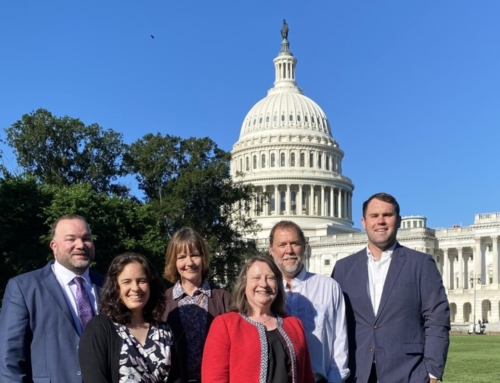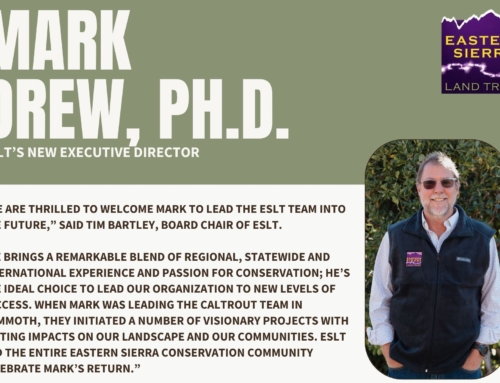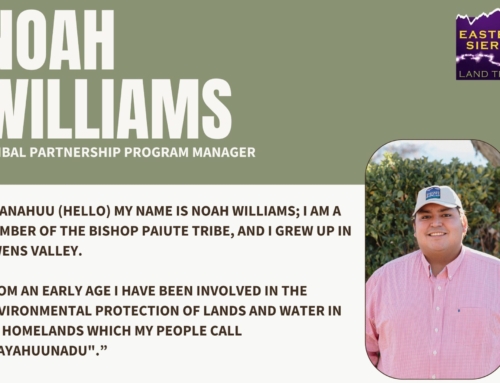When Michelle Browner first visited the Eastern Sierra, she found a landscape that spoke to her soul. In particular, it was not Mammoth or Mono, but the area around Benton that truly captivated her with its charming, quiet character, spectacular ridges crowned with weathered pinion pine, and the smell of the high desert abloom with sage. The region was a piece of history come alive. Its days absorbed her with their buoyant, ceaseless sunshine, and into the fathomless darkness of the night she would take her telescope and gaze at stars she had never seen before.
Growing up near the Florida Everglades, Michelle developed a deep respect for America’s rough, untamed lands. She had always been drawn to the wild places those lands still beyond civilization and to her the Eastern Sierra seemed a living, breathing relic of the American West.

The Adobe Valley was formed thousands of years ago by the outflow of ancient Mono Lake that continued to Benton and into the Owens Valley. Beyond Black Lake, little now remains of the wetlands that once flourished here.
Stretching northwest of Benton along Highway 120, Adobe Valley is a rare wetland in the midst of the California desert and one of the more secluded regions of the Eastern Sierra. For decades, portions of the valley have been used as a critical agricultural resource for seasonal livestock grazing, a use that continues to this day. At the valley’s eastern edge sits Black Lake, rimmed by moist alkali meadows. This seasonal lake sees few human visitors, but attracts wildlife from miles around. It serves as an important breeding outpost for dozens of migrating bird species, and provides a critical water source for pronghorn antelope, mule deer, golden eagles, and more.
To Michelle, this valley embodied the early California wilderness. On every trip to the Eastern Sierra, she would drive Highway 120 from Lee Vining to Benton and marvel at the flourishing desert that unfolded before her. “From the beginning, I felt very deeply that this was a unique and special place,” she recounts. “That particular landscape was vitally important to the history of the area. When I first saw Adobe Valley, I already had the idea in my mind that I wanted to do whatever I could to conserve it.”
Then one day fate stepped in. As she drove towards Benton on one of her frequent visits to the area, Michelle noticed a “For Sale” sign along the highway not far from Black Lake. The sign drew her attention, and then a dark burst of movement not far off captured her gaze. She watched in awe as a herd of wild mustangs galloped across the valley, tails streaming and dust rising in their wake. In that moment a decision was made. Soon after, that “For Sale” sign was removed.
Nearly twenty years later, Michelle decided it was time to take action to ensure that the land she loved would remain wild forever. At that point her home was on the east coast, and she rarely had a chance to return to her old stomping grounds in the Eastern Sierra. So she approached Eastern Sierra Land Trust to consider options that would protect Black Lake and the surrounding wildlife habitat long beyond her lifetime.

After considering options for how she could permanently protect Black Lake, Michelle decided to donate the land to Eastern Sierra Land Trust. Of this gift, Michelle says, “this was hands-down the best thing I did in the past year and the one that made me the happiest.”
“I could not, and would not ever want to have the land around Black Lake developed,” Michelle remembers. “So I decided that I wanted to make an outright land donation to the Land Trust, to ensure that the property would remain protected forever.” By the end of 2014, the donation was final. ESLT accepted ownership of the 482-acre parcel in Adobe Valley, now named the Black Lake Preserve.
Thanks to the foresight and incredible generosity of Michelle and other concerned landowners, ESLT has now helped the community protect nearly 10,500 acres of critical wildlife habitat, scenic marvels, and important agricultural lands in the Eastern Sierra. With the permanent conservation of Black Lake, the future of this unique landscape and its vital resources is assured. Its agricultural value will be maintained for limited seasonal grazing; wildlife will always find a safe haven along the lake’s shoreline; and future generations of residents and visitors will be able to find inspiration in the remote, wild beauty that makes this place so special. Thanks to Michelle, this relic of the American West will be safeguarded forever.








Fantastic! I would love to go on the next birding outing.
Thanks, Allison! If you would like to be added to our email list to be kept up-to-date with upcoming ESLT events, please email me at .
[…] Black Lake Preserve, Photo © Bill […]